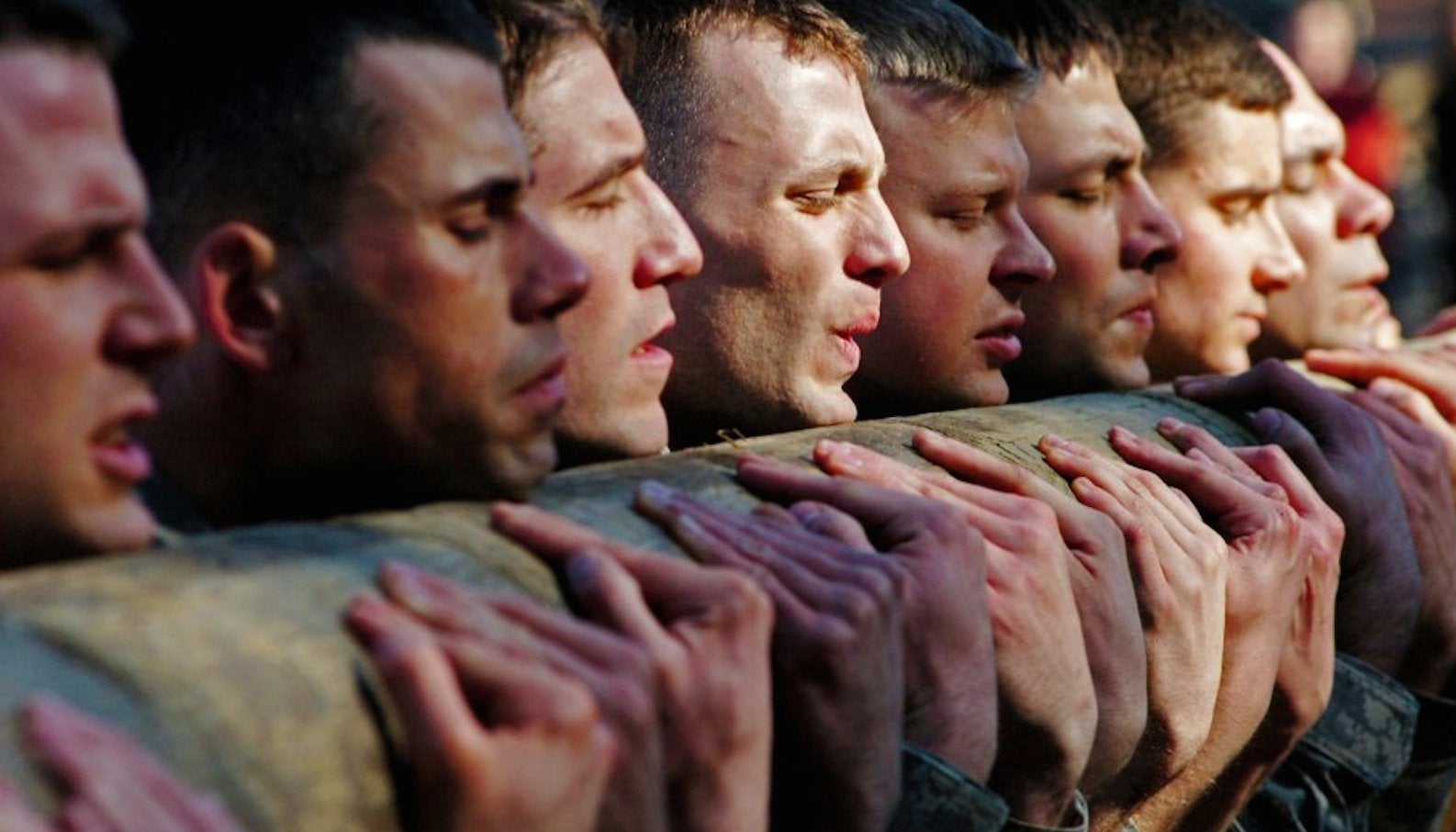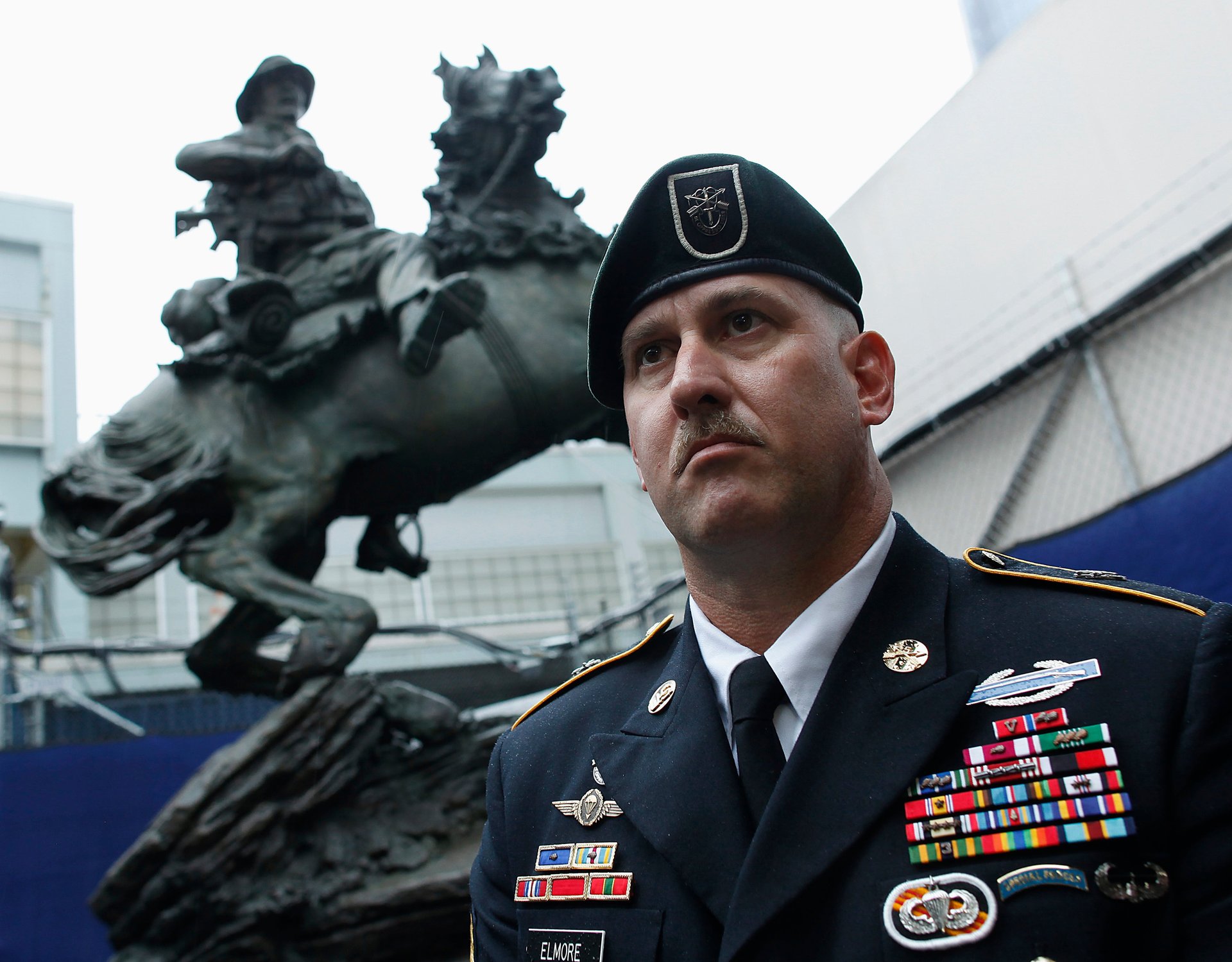The Green Berets’ elite military training is the perfect preparation for a CEO
Normally known as the “Quiet Professionals,” Green Berets have long been characterized as a community that shies away from the spotlight, a profession where humility and quietly doing your job well is prized over showmanship and accolades.


Normally known as the “Quiet Professionals,” Green Berets have long been characterized as a community that shies away from the spotlight, a profession where humility and quietly doing your job well is prized over showmanship and accolades.
But 34-year old Nate Boyer’s journey to the NFL has garnered headlines because of its unlikely story: a 29-year-old walking on to the University of Texas football team as a long snapper after serving in Iraq and Afghanistan as a Green Beret. Boyers was signed by the Seattle Seahawks after the draft concluded on May 2.
It is an unlikely transition, sure, but one that shows what is possible when you take some of the most highly-trained men in America and set them toward a difficult goal.
There’s versatility, there’s work ethic, and there’s defying what conventional wisdom says is possible. All things honed during long deployments in some of the most austere conditions on earth.
As Green Berets return from long deployments in Iraq, Afghanistan and other far-flung places around the world, the Green Beret Foundation’s Next Ridgeline initiative has been thinking about a specific kind of transition: helping members of this qualified find success in the business world after their service.
I have previously outlined why Special Forces are some of the strongest candidates for precisely this kind of successful transition. But after talking to some of the smartest businesses in the world in the next phase of our research, myself and other advocates realized that while these businesses and CEO’s may understand the potential at a high level, it is worth briefly unpacking the specific skill-sets and training that molds superior soldiers, and by the same token, superior businessmen. To put it into business terms, a prized commodity that can add a large amount of value is not being priced correctly.
Green Berets can operate autonomously
Green Berets are tasked with operating far outside the wire, sometimes without a traditional military command structure or support. They are trained to be self-sufficient and are empowered to make mission-critical decisions at any time. In order to do so effectively, Green Berets are trained in decision-making processes typically used by civilian peers at much higher levels, and are able to utilize their training in time and resource constrained environments.
Green Berets are networkers

Green Berets spend a large amount of time training, advising and assisting foreign forces abroad. The success of their operation depends on the quality of the bonds they form with their forces, so soldiers must be empathetic and able to work closely with other cultures and nationalities. Continuous training in foreign languages, and in practicing the art of teaching military skills, are essential. As geopolitical situations change over time, it’s not uncommon to find a Green Beret who has spent a decade training allied armies in sub-Saharan Africa in French now negotiating with tribal leaders in Afghanistan in Pashto.
Green Berets are integrated
Special Forces teams are modular, cross-functional and extremely versatile—and they have to find a way to make sense of whatever situation they’re thrown into. To do this, Green Berets must be willing and able to constantly cross-train with other team members. For instance, a Special Forces medic will teach his teammates how to perform lifesaving skills or how to assist him in surgery, and then turn around and learn from those teammates how to send a message via satellite radio or destroy an obstacle with explosives.
Green Berets don’t quit

The selection course for the Green Berets, known as Special Forces Assessment and Selection (SFAS), is a four-week gut check, described by retired lieutenant colonel Tony Schwalm as “a crucible of contrived hardship that mixed physical exhaustion and mind numbing tasks in a slurry of ambiguity.” It is frustrating, ambiguous, and demanding by design.
US Special Forces Candidates are carefully pushed to their limits, and never get any feedback on how well they are or aren’t doing. It is a mental test as much as it is a physical one. The Green Berets want candidates who work just as effectively when no one is watching as they when under scrutiny. They are looking for self-starters that can find motivation in less than ideal circumstances.
Following the culling that is the SFAS, there’s the Q-course, a curriculum lasting between 1 and 2 years depending on the occupation (known as your MOS). After a grueling gauntlet of language training, small unit tactics, vocational training and survival and resistance training, soldiers are rewarded with an operational detachment (known as an ODA) have proven that they don’t quit.
Green Berets are excellent planners
A Special Forces E-6, or staff sergeant, is expected to plan at a level comparable to private sector senior level managers. Green Berets are taught nuanced mission analysis and planning for both full-length and time-constrained situations following the Army’s Military Decision Making Process.
As Linda Robinson puts it in her book, Masters of Chaos: The Secret History of the Special Forces:
The Special Forces are not a rapid deployment force; the secret of their success is intensive preparation. The men studied the area they were assigned as thoroughly as any Ph.D. student. They sucked up every available open-source and classified assessment of the demographics, tribal clans, local politics, religious leaders and schisms, history, terrain, infrastructure, road maps, power grids, water supplies, crops, and local economy. They planned, debated, and rehearsed both combat and follow-on operations.
Green Berets fight well above their weight

Green Berets must be able to quickly analyze a geographical problem set or nuanced diplomatic issue and start working to solve it. A junior NCO can talk to an ambassador about their region with specificity, and doctrinally is qualified to train, advise and assist an indigenous company commander (rank of Captain with ~120 personnel). Teams are given the firepower of an organization four times their size and are expected in combat to enable an indigenous force of up to a battalion in size (~400 personnel).
As Dick Couch writes in his book, Chosen Soldier: The Making of a Special Forces Warrior:
[The Green Berets] are looking for more than someone who is tough and smart and plays well with others. They are looking for adaptability and flexibility, men who can look at a given task and come up with any number of ways to solve it. Someone with good entrepreneurial skills is a good candidate for Special Forces, since the work of the Green Berets often involves calculated risk and creative thinking. If one solution to a problem fails, they have to immediately come up with another way to accomplish the mission.
As these soldiers transition out of their jobs in the world’s most dangerous places, the Quiet Professionals do need to understand that “quiet doesn’t equal silent.” They need to start telling their stories and sharing what they have to offer. Organizations like the Next Ridgeline need to help them in articulating their skill set to the broader business world.
As we’ve seen, there’s a lot of supply coming on-line. But on the demand side of the equation, American business needs to do its homework as well. A military background has various nuances and shades. And more understanding and proactive engagement—from CEO’s down to hiring managers—is needed to truly understand what makes Green Berets unique in the market.
The people that do this will unlock a significant competitive advantage, and, to use a term near and dear to the Green Beret community, “force multiplication” that will add significantly to the bottom line.